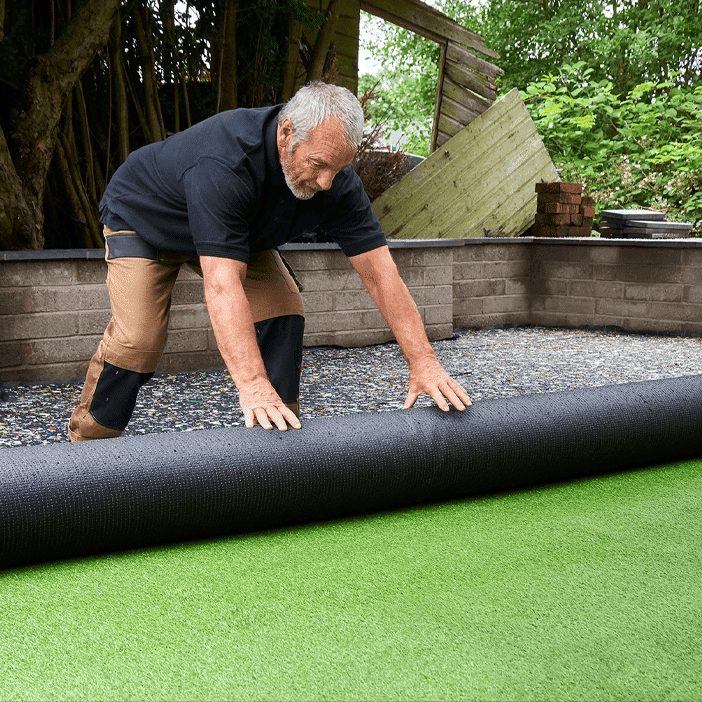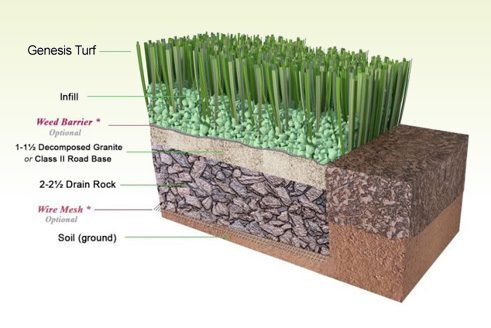Top-Grade Arizona Turf Options for a Beautiful and Green Landscape
Top-Grade Arizona Turf Options for a Beautiful and Green Landscape
Blog Article
Look Into the Environmental Advantages of Opting for Artificial Grass Solutions
The adoption of fabricated turf remedies provides an engaging possibility to address pressing ecological challenges. By substantially lowering water use and decreasing the application of damaging chemicals, these choices not just advertise sustainable landscape design but also safeguard regional ecosystems.
Water Preservation Perks
Among one of the most significant benefits of man-made grass is its capability to save water. Traditional turf lawns require substantial watering, particularly in areas prone to drought or water limitations. In contrast, synthetic grass does not require watering, dramatically reducing the total need for water resources. This attribute is specifically beneficial in deserts where water shortage is a pushing problem.
By getting rid of the need for routine watering, artificial grass adds to lasting landscape techniques and assists minimize the environmental influence of excessive water consumption. The preservation of water expands to the reduction of overflow, which can lead to soil erosion and waterway pollution.
In addition, the installation of synthetic grass allows towns and home owners to allocate water resources a lot more effectively, focusing on necessary usages such as drinking water and agriculture. The shift in the direction of synthetic grass not just promotes liable water usage but likewise lines up with broader ecological objectives targeted at maintaining natural deposits.
As communities increasingly prioritize sustainability, the water conservation advantages of synthetic grass provide an engaging situation for its adoption in industrial and property landscaping projects.
Reduced Chemical Usage
The transition to synthetic grass significantly decreases the reliance on chemical therapies generally utilized in natural turf maintenance. Conventional turf monitoring typically involves the application of plant foods, herbicides, and chemicals to promote growth and control pests. These chemicals can pose threats to human wellness, regional wild animals, and the setting, adding to dirt and water contamination.
On the other hand, synthetic grass removes the need for these harmful materials. As soon as mounted, it needs minimal maintenance, mostly being composed of regular cleaning and occasional infill replenishment. This reduction in chemical use not only profits the instant environment but additionally contributes to broader eco-friendly security. By decreasing the release of artificial compounds into the environment, man-made turf advertises healthier soil and water supply.
Moreover, the absence of chemical drainage linked with man-made turf setups aids safeguard regional rivers from pollution, sustaining marine life and maintaining biodiversity. Phoenix turf companies. As communities progressively focus on lasting methods, choosing man-made lawn presents a sensible remedy that aligns with environmental conservation objectives. Via this shift, property owners can take pleasure in lavish eco-friendly spaces without compromising environmental health and wellness, leading the method for an extra lasting future
Reduced Carbon Impact

Furthermore, the installment of fabricated turf can result in considerable water preservation. All-natural lawns call for significant quantities of water for watering, which not just contributes to the carbon impact associated with water extraction and treatment however additionally strains local water resources. In contrast, synthetic grass requires very little upkeep, calling for no watering, therefore significantly decreasing water use and its associated energy costs.
Additionally, the longevity of synthetic grass go to the website adds to its lower carbon influence. With a life-span of up to 15 years or more, the need for frequent replacements is lessened, causing much less waste and reduced power usage in manufacturing and dealing with standard turf options. Overall, artificial lawn offers a lasting option for environmentally aware landscape design.
Environment Preservation
Environment conservation is an important consideration in the debate over landscape design options, particularly when contrasting synthetic turf to all-natural turf. All-natural lawn yards frequently call for considerable maintenance, consisting of the use of pesticides, plant foods, and herbicides, which can adversely affect local ecological communities. These chemicals can seep right into the dirt and waterways, hurting native plants and fauna and interfering with local environments.
In contrast, synthetic grass offers a chance to lower the environmental impact of landscaping. By selecting synthetic lawn, homeowners can lessen the interruption of all-natural habitats related to typical yard treatment practices. Synthetic grass gets rid of the requirement for harmful chemicals, consequently protecting close-by wild animals and keeping the honesty of surrounding environments. The installation of synthetic grass can lead to the conversion of previous turf locations into more biodiverse landscapes, such as pollinator gardens or native plant areas, which can support regional wild animals.
Inevitably, the transition to man-made grass not only conserves water and reduces upkeep efforts but also fosters a more harmonious connection between human activities and the native environment, advertising habitat preservation while doing so.
Long-Term Sustainability
Long-lasting sustainability is a critical variable in examining the advantages of synthetic grass over conventional grass yards. One of the most substantial benefits of synthetic grass is its durability; it can last approximately 15-20 years with minimal maintenance, whereas all-natural turf requires constant reseeding and substitute. This durability minimizes the need for consistent resources, such as water, plant foods, and chemicals, which are essential for preserving a healthy and balanced turf lawn.
In addition, synthetic grass adds to a decrease in carbon exhausts connected with lawn treatment devices. Typical grass often require gas-powered lawn mowers, trimmers, and blowers, every one of which add to air contamination. Arizona turf. In comparison, synthetic grass eliminates the demand for such equipment, advertising a cleaner atmosphere
Furthermore, the manufacturing of fabricated lawn significantly utilizes recycled materials, boosting its sustainability account. As producers take on environment-friendly methods, the ecological footprint of synthetic grass continues to decrease.

Verdict
The fostering of fabricated grass services offers considerable environmental advantages, including significant water conservation, lowered reliance on unsafe chemicals, and a reduced carbon footprint. In addition, synthetic grass help in maintaining all-natural environments by lessening land disruption and promoting lasting sustainability through the usage of durable products. Collectively, these aspects underscore the capacity of fabricated turf to contribute favorably to ecological health and use a viable option to standard landscape design practices in a significantly resource-conscious globe.
In contrast, here synthetic grass does not require watering, significantly decreasing the total need for water sources. By minimizing the release of synthetic substances right into the community, synthetic grass advertises much healthier dirt and water systems.
Furthermore, the setup of synthetic turf can result in significant water preservation. In comparison, fabricated lawn requires very little upkeep, calling for no watering, thereby significantly decreasing water usage and its associated energy expenses.

Report this page